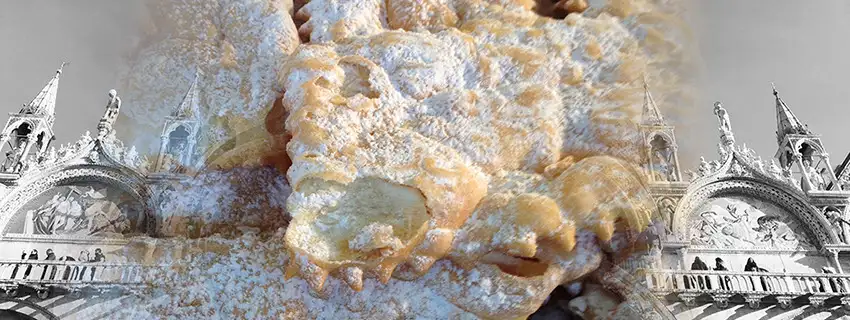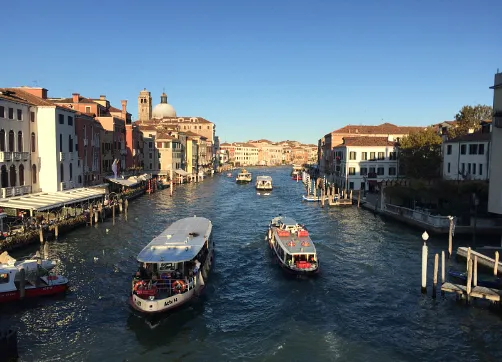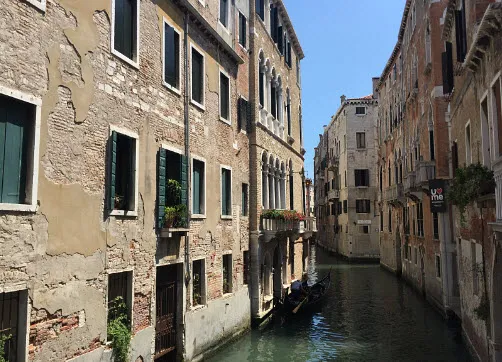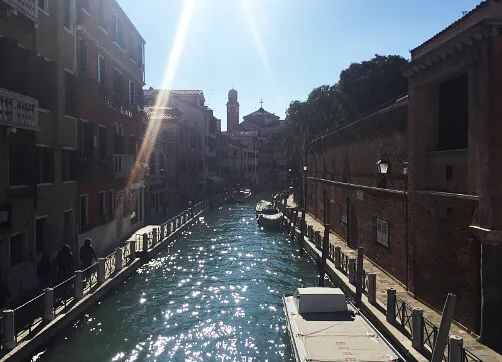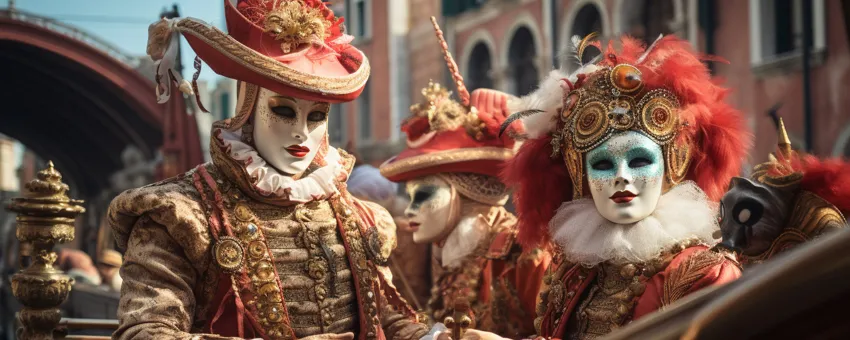Published:
Author: Antonio Maria Guerra
Venice
The Most Typical Specialties

Welcome! This section of WebFoodCulture is dedicated to the most typical specialties from Venice. We will explain what makes them so special and inimitable, starting with their history and places, all seasoned with a large number of curiosities. Finally, we will discover the most traditional restaurants and producers, thanks to which it will be possible to savor the most authentic taste of these delicacies. Enjoy the reading!
Harry’s Bar is a fascinating place, rightly part of the collective imagination. Over the years, thanks to its customers and their stories, this bar has developed a soul of its own. Two delicious specialties have been invented within its walls: ‘Bellini’ and ‘Carpaccio’. (read more)
Origin: Venice (Veneto) Typology: Historic Food Places
The Venetian Carnival: an event unique in the world, renewing its magic year after year. During its celebrations, the pastry chefs of the Doge’s city make delicious ‘Frittelle’: let’s taste this sweet specialty, finding out its history and secrets. (read more)
Origin: Venice (Veneto)
Typology: Desserts
‘Galani’ are, along with frittelle, the quintessential Venetian carnival sweets. The origins of this specialty date back to the distant past: some experts claim that they are the descendants of the Roman ‘frictilia’, served during the ‘Saturnalia’ festivities. (read more)
Origin: Venice (Veneto)
Typology: Desserts
Venice.
Located in the Northeast of the Italian peninsula, the city of Venice has hundreds of years of history: the very first settlement, dating back to the Fifth Century, hosted the populations fleeing from the barbarian invasions.
Read more
In the Thirteenth Century, thanks to its strategic geographic position, located between the East and the West, the ‘Serenissima’ became the main commercial power in the Mediterranean. A centrality that began to falter after the discovery of the Americas and the resulting change of the international trading routes.

Although many believe, probably because of the name, that Harry’s Bar is a bar, this is only partially true: it’s in fact primarily a restaurant. A very particular restaurant, that’s for sure: as already mentioned in another paragraph of this article, its owners have managed to merge elegance, refinement and what can be called the ‘spirit of the trattoria’. (read more)

Venice: the city and its islands.
Giving just a quick glance at the map of Venice, its very particular shape appears immediately clear. It’s a city unique in its kind, resting its foundations on 118 small islands, connected by a dense network of 176 channels. These channels are, in fact, the streets of the Serenissima: suggestive places, full of inimitable charm, especially when they are crossed by a beautiful gondola.
In Venice the commercialization of Galani should start, at least theoretically, from the day after the Epiphany and end with Shrovetide. This is a non-mandatory rule, that is often disregarded.
(read more)
Copyright information.
To get copyright information about the images on this page, please refer to the copyright section of each article.



